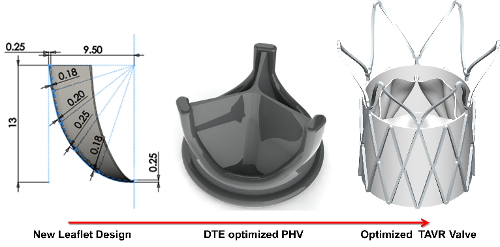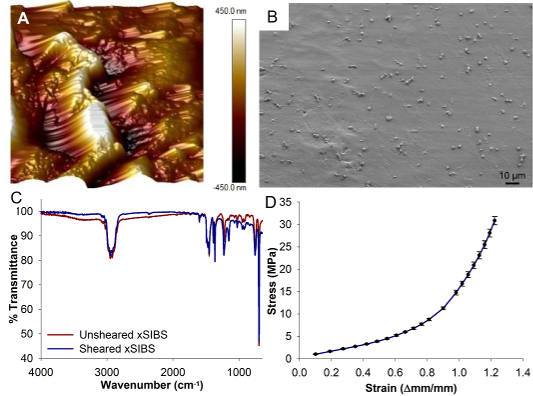Transcatheter aortic valve replacement (TAVR) has recently become a life-saving minimally-invasive alternative to patients who cannot tolerate open-heart surgical valve replacement. FDA-approved TAVR devices such as the Edwards Lifesciences Sapien and Medtronic CoreValve consist of a metal stent and bioprosthetic xenograft leaflets. However, associated complications and poor durability impede current TAVR technology from expanding into younger, lower-risk, operable patients.
Polymer valves present a clear alternative and advance over tissue valves, offering a large degree of design flexibility, material properties, low production costs, and higher tolerance for damages that the valve may incur during TAVR deployment. Ideally, polymer valves can offer the extended durability of mechanical valves together with the hemodynamic performance of bioprosthetic valves. Efforts by several groups have yet to successfully combine the properties needed for a successful prosthetic heart valve - biostability, low thrombogenicity, calcification resistance, hydrodynamics, durability, and manufacturing consistency.
We are developing a TAVR valve using a novel polymer technology and design optimization concept:
The Polymer:
xSIBS - a thermoset, cross-linked, variation of SIBS designed for use in heart valves by Innovia LLC (Miami, Florida), with mechanical properties and hemocompatibility evaluated by our group. It maintains the low thrombogenic potential of SIBS, while having drastically improved mechanical properties, as required for prosthetic heart valve applications.
Valve Design:
- Optimized through analysis with device thrombogenicity emulation (DTE) methodology for achieving a reduced clotting risk.
- Variable radial cross-sectional thickness of the leaflet to minimize stresses developed in the leaflets under a diastolic pressure load and during leaflet flexion.
- Design of the compression mold such that the manufactured leaflets experience minimal stresses during their excursion to fully open and closed positions for achieving better hemodynamic performance combined with extended durability.

